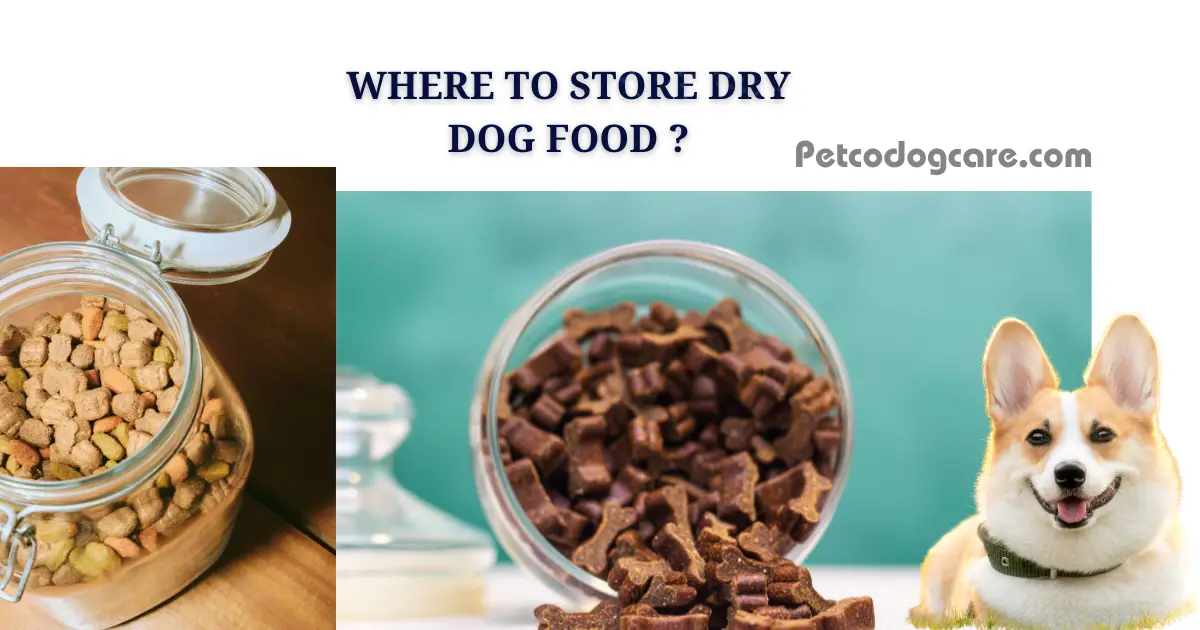We all know that old saying, “You can’t teach an old dog new tricks,” but when it comes to store dry dog food long term, there are plenty of tricks to learn. Whether you’re a seasoned pet owner or a novice, understanding how to store your furry friend’s food properly is essential to keep it fresh and nutritious.
What Makes Dog Food Go Bad?
Before delving into long-term storage, it’s crucial to understand why dog food goes bad. The main culprits are air, light, moisture, and temperature fluctuations. Exposure to these elements can lead to oxidation, mould growth, and nutrient degradation, rendering your dog’s food less effective.
Where Store Dry Dog Food Long Term
The key to long-term dog food storage is selecting the correct location. Find a cool, dry, and dark spot to keep the food. Airtight containers are a must to prevent pests and moisture from spoiling the kibble.
How Do You Know If It Has Gone Bad?
To ensure your dog’s food remains safe and nutritious, regularly inspect it for any signs of spoilage. Check for a rancid smell, unusual colours, or changes in texture. When in doubt, discard the food – it’s better to be safe than sorry.
How Long Does Dry Dog Food Stay Fresh Once Opened?
The clock starts ticking once you’ve opened a bag of dry dog food. To maximize freshness, consume the food within 6-8 weeks. If you have a large bag, consider using a vacuum sealer to reseal it for longer preservation.

Why Proper Dog Food Storage Matters
Proper dog food storage isn’t just about preserving the food; it’s about safeguarding your furry friend’s health. Stale or contaminated food can lead to digestive issues, allergies, and overall health problems. Now, let’s dive into some intelligent tips for storing dry dog food long-term.
Tips for Long-Term Dry Dog Food Storage
1.Buy Smaller Bags :
Opt for smaller bags of dog food if you have a single pet. Smaller bags mean faster consumption, reducing the risk of food spoilage.
2. The Early Bird Catches the Worm” – Practice FIFO (First In, First Out)
Rotate your dog’s food stock by placing newer bags at the back and using the older ones first. This ensures your dog always eats the freshest kibble.
3. Use a Scoop
Using a dedicated scoop to dispense food prevents contamination and overfeeding, maintaining food quality.
4. Invest in Airtight Containers
Airtight containers with secure seals are your best friend for long-term dog food storage. They keep pests and moisture at bay.
5. Keep the Bag Sealed
Fold the top of the dog food bag down and use a clip or binder to seal it tightly. This extra layer of protection helps maintain freshness.
6. Wash Feeding Bowls
Regularly clean your dog’s food and water bowls to prevent contamination and ensure a fresh dining experience.
7. Avoid Buying in Bulk
Resist the urge to purchase dog food in bulk unless you have multiple dogs. Smaller quantities are easier to manage and less prone to spoilage.
8. Choose the Right Container Size
Select a storage container that comfortably fits the entire bag of dog food. Avoid cramming it in; this can compromise the seal.
9. Handle with Care
Treat dog food bags carefully to avoid punctures or tears that can let in air and moisture—store bags off the ground to prevent pests.
10. Read the Expiry Date
Always check the expiration date when purchasing dog food. This ensures you start with the freshest product possible.
Conclusion
Remember, proper storage is the key to preserving your pet’s well-being, so don’t let good food go to waste. Following these idiomatic guidelines ensures that your dog’s food remains as tasty and nutritious as the day you bought it.
Is it better to store dog food in plastic or metal?
Plastic Containers
Pros
- Affordability: Plastic containers are generally more budget-friendly than metal containers, making them an economical choice.
- Lightweight: They are lighter and easier to handle, making them convenient for daily use.
- Transparency: Many plastic containers are transparent or have clear sections, allowing you to see the remaining food level easily.
- Variety: Plastic containers come in various shapes and sizes to suit different storage needs.
Cons
- Durability: Metal plastic containers may be less durable than metal ones, especially if exposed to rough handling or extreme temperatures.
- Pest Risk: While airtight plastic containers can help prevent pests, metal containers may be less effective than they are in keeping out determined critters.
Metal Containers:
Pros
- Durability: Metal containers are generally more robust and long-lasting than plastic ones, making them a good choice for long-term storage
- Rodent-Proof: Metal containers are less susceptible to rodent infestations, as they are more challenging for rodents to chew through.
- Protection from Light: They provide better protection against light, which can contribute to food spoilage.
- Airtight Seal: Containers provide a more reliable airtight seal, which helps keep the food fresh for a more extended period.
- Protection: They offer better protection against pests, especially when designed with airtight seals.
Cons
- Heavier: Metal containers are more severe and can be less convenient to handle, especially regarding daily feeding.
- Cost: They are often more expensive than plastic containers.
- Not Transparent: Most metal containers are not transparent, so you won’t be able to see the food level without opening them.
Bag :
Pros
- Convenience: Keeping dog food in its original bag is convenient, as the packaging often has essential information such as the product name, batch number, and expiration
- Cost: It’s a cost-effective option, as you don’t need to purchase additional containers.
Cons
- Seal Quality: Over time, the seal on the original bag may deteriorate, potentially allowing air and moisture to affect the food’s freshness.
- Aesthetic: Bags can look messy and only fit well in some storage spaces.
